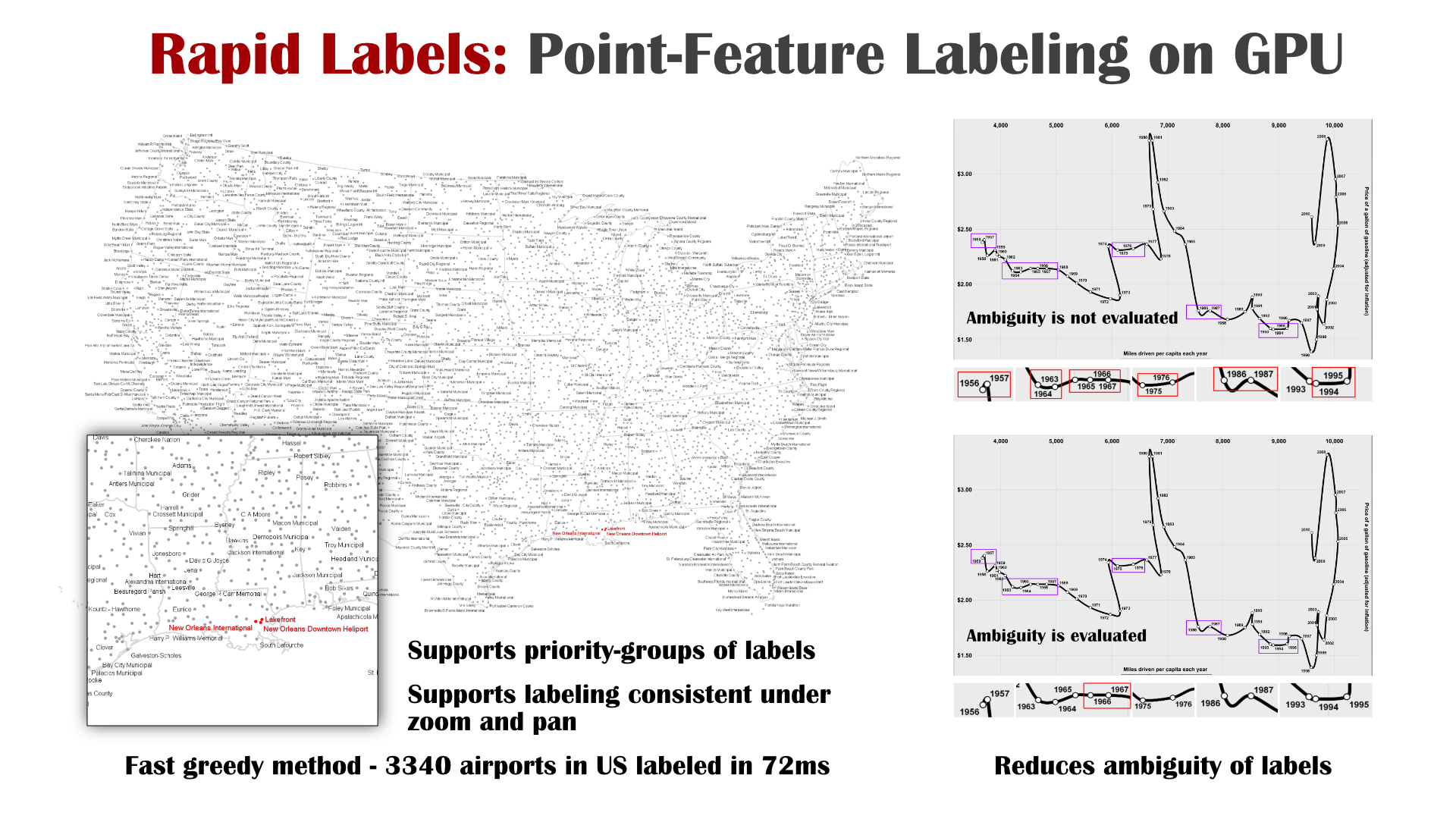Rapid Labels: Point-Feature Labeling on GPU
Václav Pavlovec, Ladislav Čmolík
External link (DOI)
View presentation:2021-10-29T15:00:00ZGMT-0600Change your timezone on the schedule page
2021-10-29T15:00:00Z

Fast forward
Direct link to video on YouTube: https://youtu.be/tVEMCigvWkw
Abstract
Labels, short textual annotations are an important component of data visualizations, illustrations, infographics, and geographical maps. In interactive applications, the labeling method responsible for positioning the labels should not take the resources from the application itself. In other words, the labeling method should provide the result as fast as possible. In this work, we propose a greedy point-feature labeling method running on GPU. In contrast to existing methods that position the labels sequentially, the proposed method positions several labels in parallel. Yet, we guarantee that the positioned labels will not overlap, nor will they overlap important visual features. When the proposed method is searching for the label position of a point-feature, the available label candidates are evaluated with respect to overlaps with important visual features, conflicts with label candidates of other point-features, and their ambiguity. The evaluation of each label candidate is done in constant time independently from the number of point-features, the number of important visual features, and the resolution of the created image. Our measurements indicate that the proposed method is able to position more labels than existing greedy methods that do not evaluate conflicts between the label candidates. At the same time, the proposed method achieves a significant increase in performance. The increase in performance is mainly due to the parallelization and the efficient evaluation of label candidates.